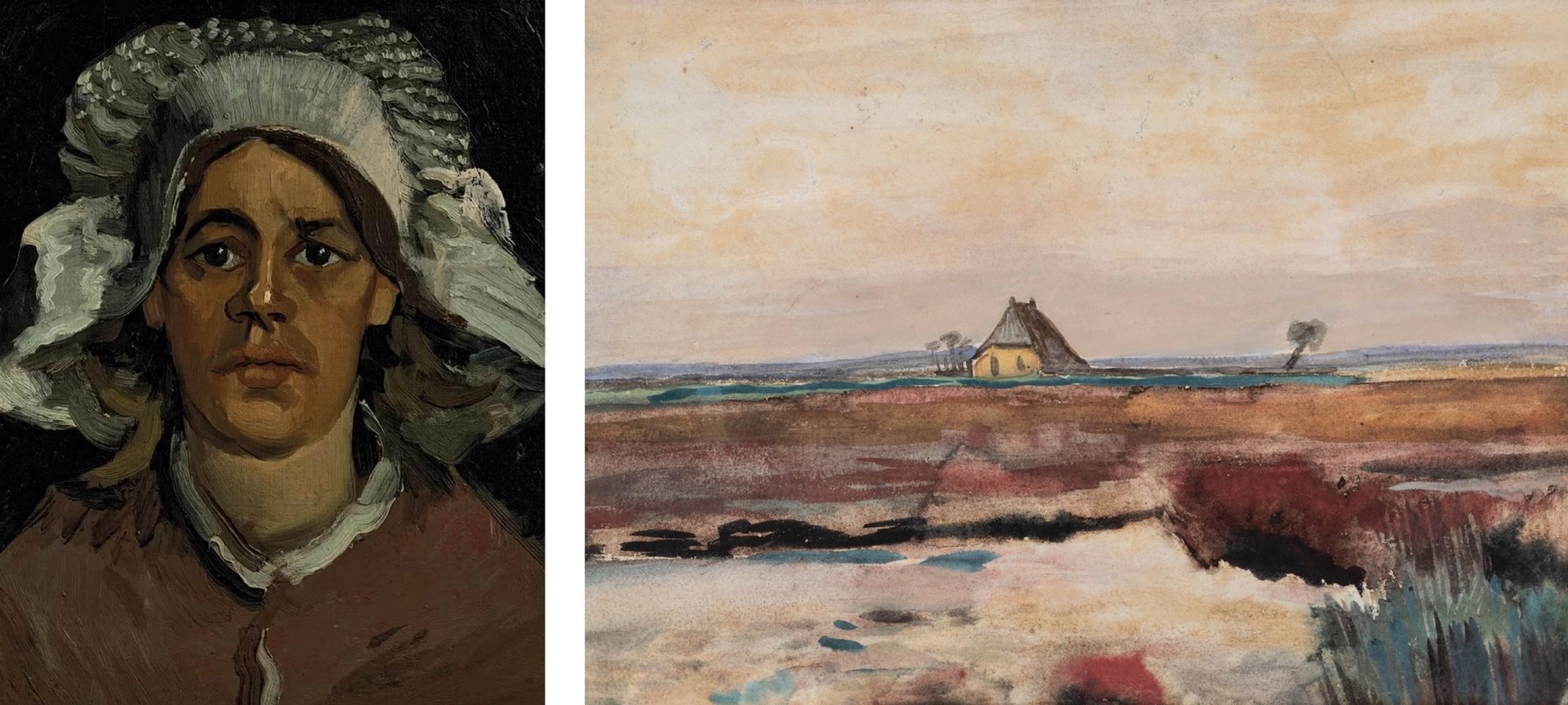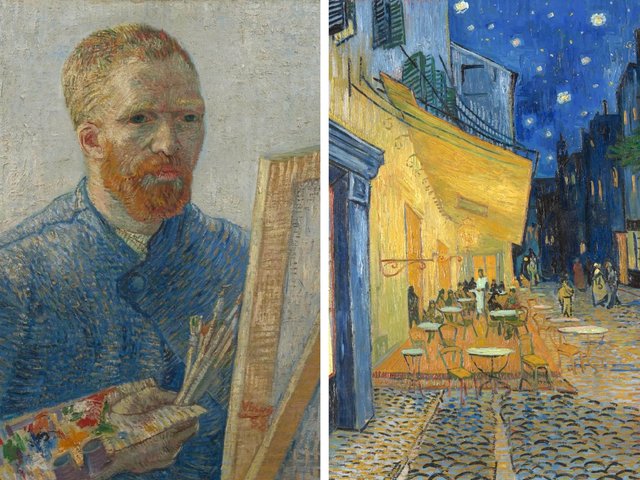Van Gogh’s Portrait of Dr Gachet (June 1890), which is among his greatest paintings, finally seems to have been tracked down. It was last seen in 1990, when it sold for $82.5m, making it then the most expensive painting ever auctioned.
The portrait later discreetly changed hands twice, most recently in 1998, when it disappeared into an extremely private collection. There has been endless speculation about its fate.
The New York Times has now named the apparent buyer, a family in Switzerland. However, for legal reasons as a European-based publication, we are not doing so. If the newspaper's report is confirmed, it could end up as one of the biggest Van Gogh stories of the year. (There is a second version of the portrait at the Musée d’Orsay in Paris.)
Van Gogh in 2024
Few artists are in the news as much as Van Gogh, with 2024 proving to be no exception. He was singled out by climate protesters, with a soup attack on two Sunflower paintings in the blockbuster exhibition at London’s National Gallery on 27 September.
Fakes always attract interest. In October, the Van Gogh Museum published a scholarly critique of three works in private collections, downgrading them. On other occasions new research confirms attributions, as with Poland’s only Van Gogh, Country Huts among Trees (September 1883) at Warsaw’s Museum of John Paul II and Primate Wyszynsk.

A Nazi-era issue? Van Gogh’s Head of a Peasant Woman (March 1885) and The Old Tower (detail) (July 1884)
Bührle Collection/Bührle Foundation, Zurich
When it comes to Nazi-era restitution, a claim over the Sunflowers (December 1888-January 1889) at Tokyo’s Sompo Museum of Art was dismissed by a US federal court on jurisdictional grounds. But in Switzerland, questions are being raised about two Van Goghs in the Bührle Collection, which is on long-term loan to the Kunsthaus Zurich.
Bold acquisitions

Van Gogh’s Head of a Woman (Gordina de Groot) (March-April 1885) and Landscape with a Farm (September-November 1883)
Het Noordbrabants Museum, s’Hertogenbosch (photograph Peter Cox) and Drents Museum, Assen
Last year two Dutch regional museums succeeded in buying Van Goghs, a major achievement considering current prices. In October the Noordbrabants Museum in the southern Netherlands acquired Head of a Woman (Gordina de Groot) (March-April 1885) for €8.6m, making it among the most expensive Van Goghs bought by any museum. It came from the eclectic private collection of the London dealer Daniel Katz. Next year it will be the centrepiece of an exhibition at the museum (26 July-23 November 2025).
The Drents Museum in Assen, in the north of the Netherlands, raised funds to buy a watercolour dating from Van Gogh’s stay in the Drenthe region. Landscape with a Farm (September-November 1883) was acquired from a Canadian private collection for €2.4m. Although not normally on display (for conservation reasons), it will be shown from 21 January to 2 March 2025.
Record prices

Van Gogh’s Corner of a Garden with Butterflies (May-July 1887) and Moored Boats (July 1887)
Christie’s
When it comes to Van Gogh auction sales, Christie’s came tops in 2024, selling Corner of a Garden with Butterflies for $33.2m and Moored Boats for HK$250.6 (US$32.2m). Corner of a Garden with Butterflies represented a record sum for a Paris-period Van Gogh. Many of the finest Van Goghs now go to East Asian buyers, and after being auctioned in Hong Kong, Moored Boats went to a Chinese collector. Christie’s also sold the painting Head of a Woman with White Cap (£1.9m) and the watercolour Woman Sewing (£2.5m).
Sotheby’s had a couple of more modest works: the drawing Two Women strolling (£312,000) and the painting Head of a Peasant ($787,000). Bonhams auctioned the drawing Sien’s Mother’s House seen from the Back Yard (£1.1m). Among the Van Goghs handled by dealers was Head of a Peasant Woman in a White Cap, which was sold by New Orleans-based M.S. Rau for around $5m.
Shows of the year

Van Gogh’s portraits of The Lover (Paul-Eugène Milliet) and The Poet (Eugène Boch) (both September 1888)
Kröller-Müller Museum, Otterlo and Musée d’Orsay, Paris
The most important exhibition of the year was Van Gogh: Poets & Lovers at London’s National Gallery (until 19 January 2025). Not surprisingly, tickets sold out quickly.
Paintings and drawings from the Kröller-Müller Museum in Otterlo travel frequently. This year a large group of loans went to the Revoltella Museum in Trieste, Italy; the Fubon Art Museum in Taipei, Taiwan; and now the Hangaram Art Museum in Seoul, Korea (until 16 March 2025)
Although only including three works by the master, Van Gogh and the Stars at the Fondation Vincent van Gogh Arles had as its centrepiece, Starry Night over the Rhône (September 1888). On loan from the Musée d’Orsay in Paris, it is among the artist’s most popular works, always attracting a crowd.
Another show had just a single painting, but one with a fascinating story. Ultra-Violet: New Light on Van Gogh’s Irises, at the J. Paul Getty Museum, Los Angeles (until 19 January 2025), presents the results of a scientific examination: the artist’s pigment had faded, with his purple flowers now turned bluer. Pine pollen was discovered in the paint, helping to identify the spot in the asylum garden where the artist had placed his easel.
An exhibition linking the Chinese-Canadian artist Matthew Wong and Van Gogh opened at Amsterdam’s Van Gogh Museum and is now at the Kunsthaus Zurich (until 26 January 2025), from where it will go on next year to Vienna’s Albertina. At each venue a separate small group of related Van Gogh works are being shown.
The exhibition year ended with How Van Gogh came to Groningen (until 5 May 2025), commemorating an 1896 show held in the northern Dutch city. Six years after the artist’s death a small group of avant-garde students succeeded in borrowing over 100 paintings.
My own highlights of the Van Gogh year? The National Gallery exhibition, because of the amazing selection of loans from the artist’s finest period, in Provence. And for me personally, the opportunity of a private visit to the patients’ garden at the asylum where Van Gogh sought solace in painting nature.

Van Gogh’s Hospital at Saint-Rémy (September-October 1889) and photograph (April 2024)
Hammer Museum, Los Angeles; © Martin Bailey
NOTE TO READERS: Adventures with Van Gogh will be taking a Christmas break, returning on 10 January 2025







